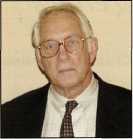 |
Home | Search | Browse | About IPO | Staff | Links |
 |
Home | Search | Browse | About IPO | Staff | Links |
|
Illinois: a community?  When Illinois joined the Union in 1818, most of its sparse population lived in the southern third of the state. As more people came to settle in the central and northern parts, the seat of government moved in the late 1830s from Vandalia in the south to Springfield in the center. Today more than 70 percent of our population lives in northeastern Illinois. If being in the center of population were the criterion today, our capital city would be west suburban Naperville. In 1973, a geographer published a provocative book in which he advocated the total redrawing of boundaries of the states. Among the criteria for the new boundaries were "community of interests" created by the dynamics of decades of industrialization and urbanization followed by suburbanization. Since Illinois was created in the early 19th century, its people have had in common mainly a constitution with a bill of rights, a governor, a legislature, and other state government entities. Otherwise, Illinois has lacked the characteristics of a community. Its boundaries are based on major rivers and arbitrary lines of latitude and longitude, not on underlying social and economic interrelationships. This geographer, George Pearcy, whose book is entitled A Thirty-Eight State U.S.A. (Plycon Press, 1973), totally carved up Illinois. He created the State of Dearborn, centered on the six-county Chicago area but extended in scope to cover the vast megalopolis from southeast Wisconsin around Lake Michigan to northern Indiana and southwest Michigan. It is interesting to speculate just how far out the boundaries of the hypothetical Dearborn should extend southward and westward. For example, the southern and southwestern boundaries might be drawn at those points where readership of the Chicago Tribune drops off significantly, where Cardinals fans start to outnumber Cubs fans, and where more people take their summer vacations in Missouri and Kentucky rather than Michigan and Wisconsin. Westward, the boundaries should extend at least to Rockford and DeKalb. These places have been linked to Chicago since the middle of the 19th century by railroad and more recently by the expressway system. Today, DeKalb's Northern Illinois University draws students predominantly from Chicago suburbia, and suburban sprawl continues unabated westward from the Fox River. Neighboring Iowa (labeled Prairie) and Indiana (renamed Wabash) remain somewhat in intact, both gaining and losing territory in Pearcy's scheme. Apparently, there is in these states, in comparison with Illinois, a greater sense of identity with and interest in the state as a whole and its history. These states are more compact geographically, less populous, and lack the degree of historic regional antagonisms and cultural group differences as represented by Chicago/Cook County vs. central and southern Illinois. In each, the largest city is in the center of the state, is also the capital, and its principal daily newspaper has wide readership throughout the state. Pearcy divides the rest of Illinois as follows: No longer does the Mississippi River awkwardly split the Quad Cities metropolis between two states; it goes to Prairie, along with other parts of northwest Illinois. A strip of eastern Illinois shares with Indiana the experience of being part of the Wabash River Valley and thus is assigned to the proposed state of Wabash. With the widespread use of the automobile, many residents of southeastern Illinois have been oriented socially and economically to western Indiana. They shop, seek entertainment, and have jobs in the Terre Haute, Vincennes, and Evansville areas and follow the media emanating from these places. The rest of southern Illinois and parts of central Illinois go to the new state of Osage, centered on the St. Louis metropolitan area and covering its hinterland. Obviously, the author of A Thirty-Eight State U.S.A. could not consider these proposals feasible. His plan for remaking the states, however, makes for interesting reading and speculation. It reminds me of one of the purposes of the Illinois State Historical Society: to promote awareness of and interest in the development of all the state's regions. This is indeed a significant contribution given the fact that many people in any one part of the state have little contact with or knowledge of other parts. Illinois is a "wondrous story," a tale worth telling to each succeeding generation. But first we have to rclearn what it means to be Illinoisan. David W. Scott  ILLINOIS HERITAGE| 3 |
|
|